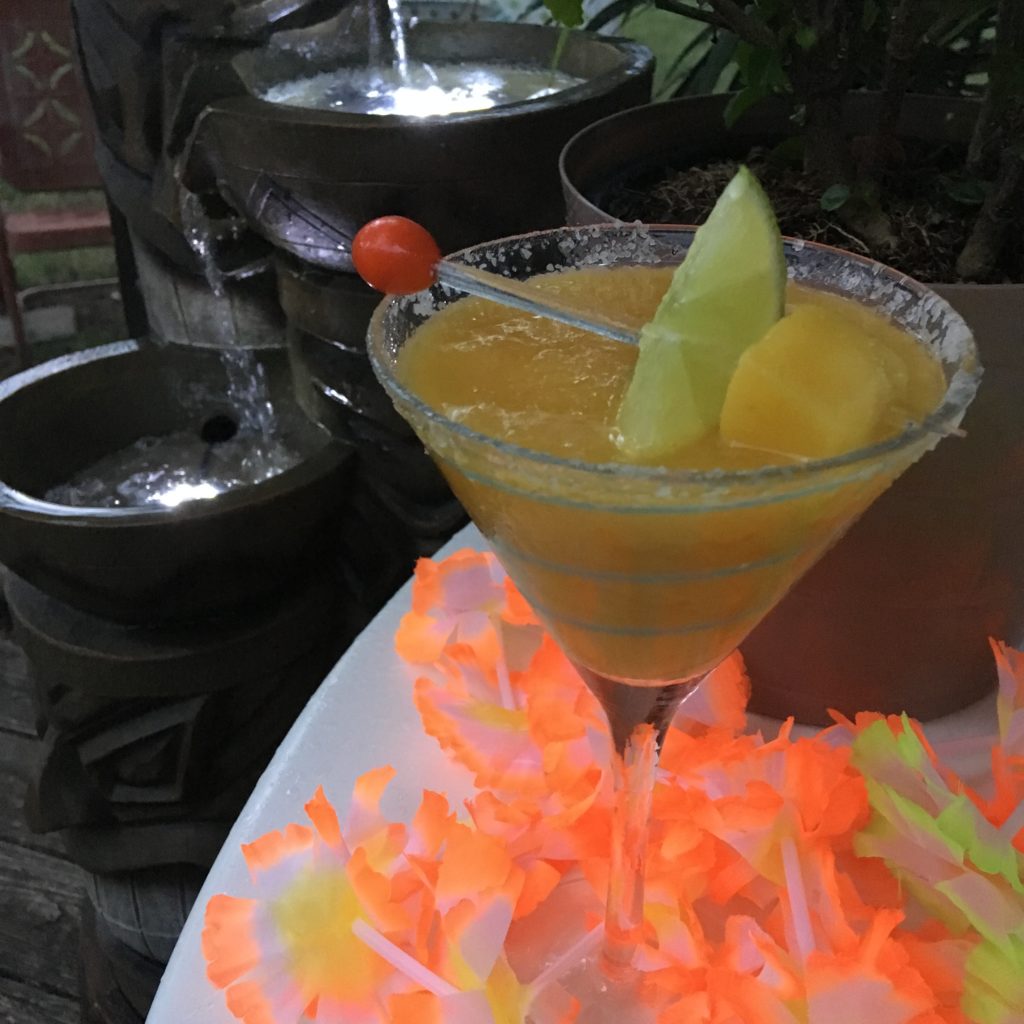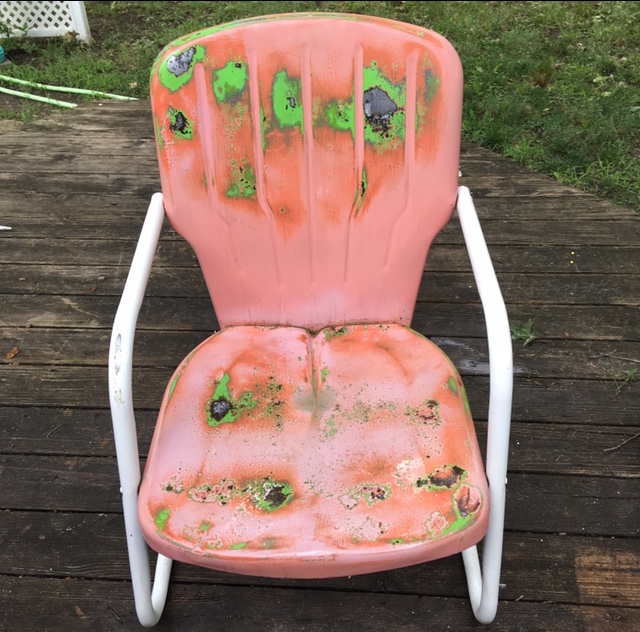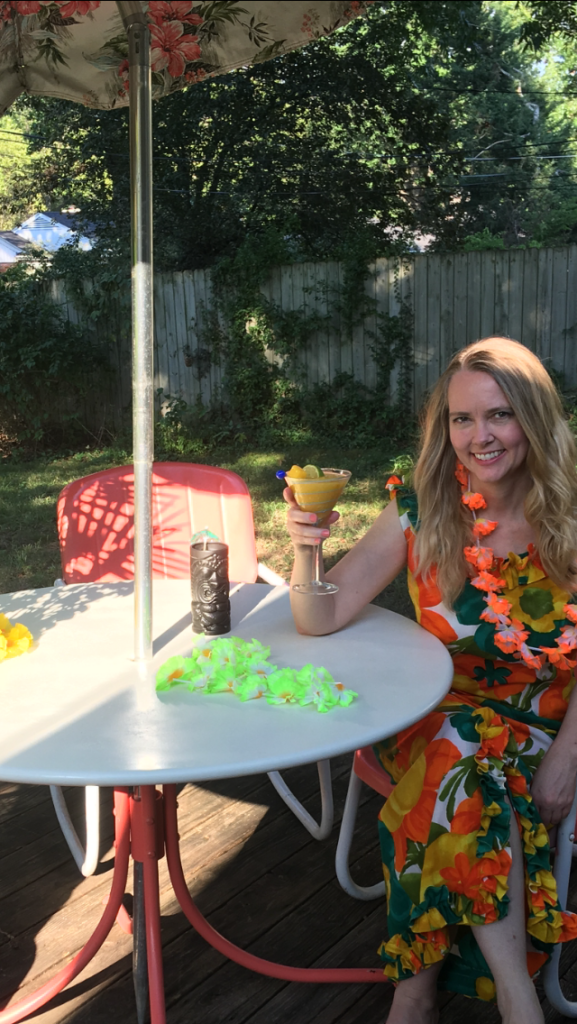
The Gentleman Savage
She smiles with her lips
Wet with rum
They’re tinted red
The war paint of choice
The gentleman watches them part
The savage sucks them dry
She senses with her ears
Adorned with pearls
They hear bongo drums and strings
And water crashing upon itself over rough, native stones

The gentleman speaks flowery words
The savage grunts his language of desire
She hunts with her eyes
Sparkling against the dried grass
They flash at the aesthetic delights
In their own shade of green
The gentleman studies their subtlest glint
The savage plants himself in their reflection

She prays with her mind
To the gods of virtue, and the gods of lust
The escape to paradise captivates her
But she lingers in anticipation in the dark
The gentleman brought her here
But the savage is near
Who will carry her home?
Who will capture her trust?
What’s so perfect about this metal chair, table, and umbrella combination—the entire image actually—is its utter imperfection. It is so crazy unauthentic! The table is pre-WWII and was originally all white as far as I can tell. The chairs, probably made by two different companies (Flanders and Warmack), definitely after the war, both came out of the factory in a shade of green. I’d date the umbrella to around 1960, and a previous owner cut off all its glorious, dangling fringe. Yet, I cobbled these pieces together, cleaned, sanded, repainted, and created something that never was before, in hopes of creating the aesthetic of kitschy, mid-century Tiki. And the more I delve into my research of what Tiki was, the more I believe I’ve done exactly that.

Pre-WWII metal table–maker unknown.
Ernest Gantt, who later renamed himself Donn Beach, sparked the mid-century Tiki craze during the depression. Donn collected items—flotsam, jetsam, nets, fish lamps, shells, etc.—in the late 1920s during his youthful travels to the Caribbean, the South Pacific, and beyond. After he ran out of money (his college fund to be precise), Donn returned to American and bootlegged for a bit. In 1933 he transplanted his accumulated treasures into a vacated tailor’s shop in Hollywood, establishing The Beachcomber Café, the birthplace of American Tiki. Interestingly, the soon-to-be hotspot for Hollywood elite (Chaplin, Crawford, Astaire, and Dietrich to name a few) contained not a single Tiki; California artists injected the namesake Polynesian idol into the movement years later.

A post-WWII Flanders or Warmack.
What Donn’s did have in the early days, and became most noted for, were his “Rhum Rhapsodies,”—secret-ingredient cocktails purely concocted in Donn’s imagination and his backroom bar.
The beauty of Donn’s tropical escape, which was more raw and earthy than the other black-tie, paradise-themed nightclubs of the day, is the unification of beach “trash,” newly invented rum drinks, a casual atmosphere, and an ancient theme, essentially, a version of paradise created solely in one man’s mind. Arguably, he crafted an authentic, desirous ideal from the most inauthentic ingredients. But everyone was too busy having a good time to care.
It’s said the American Tiki craze—the kitschy, alcohol infused, bamboo and palm, Hawaiian, orchestral tribal tune, mid-century escape—peeked around 1960 and died in the early ’70s. The coming-of-age baby boomers wanted their own scene.
I’d argue the raw, stripped-down, barebones desire of Tiki will never die. It can’t. It’s em
bedded deep in our DNA. The more humans evolve and progress the wider the inevitable gap from our instincts. We’ve created a complex world for the sake of complexity—to give our minds problems to solve because we’re no longer fighting to survive every minute of every day. And it’s exhausting. And stressful. And we need an escape from what was supposed to be paradise. But isn’t. Because the mortgage and the new transmission and the guy with no vocal filter in the cubical next door and the endless weekend soccer tournaments . . . these things are all overwhelming. Sometimes we want to push it all out-the-door and simply eat, drink, and mate. Do we need it? Yes. Does it sound savage? Of course. That is the promise of Tiki.
The vintage, Alice Hawaiian
dress, ceramic mug,
and patio umbrella
are the only authentic
Tiki objects in the image below.

The artist, the table and chairs.
A shout out to Don Storer at Midcenturymetalchairs.com for his ongoing research assistance.
Continue to follow The Metal Lawn Chair of the Month at AVintageChick.com
C R Kennedy
Cate, Martin. Smuggler’s Cove: Exotic Cocktails, Rum, and the Cult of Tiki. Ten Speed Press, Publisher. 2016.
Leave a Reply